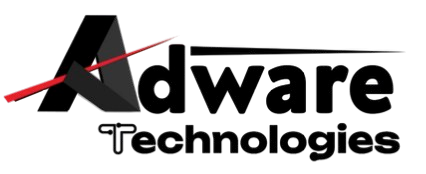In today's fast-paced world, remote collaboration has become a ubiquitous practice, enabling businesses and developers to work together seamlessly across borders and time zones. This is especially true for web development projects, where clients and developers often collaborate remotely to create innovative digital solutions. In this article, we will explore the intricacies of collaborating remotely on web development projects, starting from the initial meeting to the final product delivery. We will discuss the strategies and best practices that we use ourselves for effective communication, tech stack selection, and the utilization of popular technologies such as Ruby on Rails, Django, Node.js, React, and Vue.js.
- The First Meeting: The foundation of a successful remote collaboration lies in the first meeting between the client and the development team. This meeting sets the tone for the entire project and allows both parties to establish clear communication channels, understand project goals, and define expectations. Here are the key elements of the first meeting:
a. Establish Clear Communication Channels: It is crucial to identify and agree upon the most suitable communication tools for seamless interaction. Video conferencing, instant messaging, and project management tools facilitate real-time discussions and effective project updates.
b. Understand Client Requirements: Actively listen to the client's vision, goals, and objectives for the web development project. Take thorough notes and ask clarifying questions to gain a comprehensive understanding of the client's needs and expectations.
c. Discuss Project Scope and Timeline: Collaboratively define the project scope, deliverables, and the desired timeline for completion. Establishing realistic deadlines is essential for successful project execution and client satisfaction.
- Planning and Tech Stack Discussion: Once the project's requirements are clear, the development team can proceed with planning and discussing the appropriate tech stack. This stage involves evaluating project complexity, and scalability needs, and selecting the right technologies that align with the client's goals. Here are the steps involved:
a. Analyze Project Complexity: Carefully evaluate the project's complexity, scale, and future scalability needs. Understanding the project's intricacies is crucial in selecting the most appropriate tech stack.
b. Choosing the Right Technologies:
- Ruby on Rails: Renowned for its simplicity and convention over configuration, Ruby on Rails is an ideal choice for rapid application development.
- Django: Based on Python, Django emphasizes code reusability and scalability, making it a preferred framework for building robust web applications.
- Node.js: As a server-side JavaScript runtime, Node.js is perfect for real-time applications and offers fast performance and scalability.
- React A powerful JavaScript library for building dynamic user interfaces, React excels in creating interactive and single-page applications.
- Vue.js: Vue.js, another popular JavaScript framework, is favored for its simplicity and ease of integration into existing projects.
c. Evaluate Team's Expertise: Assess the development team's proficiency and experience with the proposed tech stack. It's essential to have skilled developers who can work efficiently with the chosen technologies.
- Project Execution: With a solid plan and the right tech stack in place, the remote collaboration enters the execution phase. This stage focuses on efficient project management, iterative development, and continuous client feedback. Here are the key components of project execution:
a. Agile Development Methodology: Embrace Agile practices for iterative development and regular client feedback. Agile allows for adaptability and ensures that the project evolves based on changing requirements.
b. Regular Progress Updates: Schedule periodic progress updates to keep clients informed about the project's status. Transparent communication fosters trust and strengthens the client-developer relationship.
c. Collaborative Issue Tracking: Utilize project management tools to track tasks, identify roadblocks, and manage project timelines effectively. Clear visibility into project progress aids in early issue identification and resolution.
- Continuous Collaboration: Maintaining consistent and open communication throughout the project's lifecycle is essential for a successful remote collaboration. Effective remote collaboration practices include:
a. Conduct Regular Meetings: Arrange virtual meetings at predefined intervals to discuss project progress, clarify doubts, and address any emerging challenges. Video conferencing fosters a sense of connectedness among team members and clients.
b. User Acceptance Testing (UAT): Involve clients in User Acceptance Testing to validate functionalities and ensure that the developed product aligns with their expectations. UAT provides valuable feedback for fine-tuning the application.
- Final Delivery: The final stage of the remote collaboration process culminates in the delivery of the completed web application. Here's what to focus on during this crucial phase:
a. Thorough Testing: Conduct comprehensive testing, including unit testing, integration testing, and user testing, to ensure a bug-free and seamless application. Rigorous testing guarantees a high-quality final product.
b. Documentation: Provide detailed documentation on the application's functionalities, architecture, and future maintenance requirements for the client's reference. Clear documentation simplifies future updates and maintenance.
c. Post-Development Support: Offer post-development support and maintenance services to address any post-launch issues or updates. Providing ongoing support strengthens client relationships and helps ensure the application's continued success.
Conclusion: Collaborating remotely with clients on web development projects requires effective communication, understanding client requirements, and leveraging the right tech stack. By following a structured approach, utilizing appropriate tools, and fostering continuous collaboration, remote teams can deliver successful web applications that meet clients' expectations and business objectives. Remote collaboration not only breaks geographical barriers but also opens up a world of possibilities for clients and developers alike. By embracing modern technologies and implementing best practices, remote collaboration is paving the way for a new era of innovative and impactful web development projects.




Comments (0)